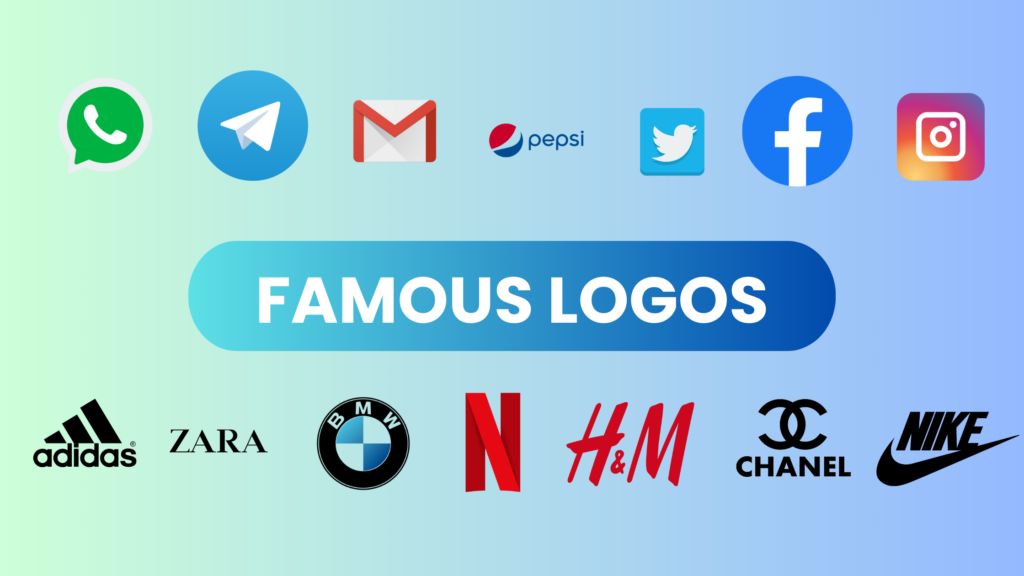Do you want to become a freelance logo designer? If your answer is yes, you have come to the right place. In this article, I’ll guide you through the essential skills you need and the steps you should take to become a successful freelance logo designer.
Scope of Freelance Logo Designer
Bloggers need a logo for their blog. Youtubers need a logo for their channel. Any person having a social media page needs a logo. Any business needs a logo. A logo is a visual representation of a business or organization. Logos serve as a key element in establishing brand recognition; they help businesses connect with their customers.
Today, there is a great need for freelance logo designers because every client wants a unique and memorable logo for their business that helps companies stand out, build brand recognition, and convey their core values to customers.
So, if you have decided to become a freelance logo designer, then there is a lot of scope for you in this field. You can get a lot of success in it with your hard work and consistency.

Different types of logos
To become a professional logo designer, you must know about different types of logos. This is important for you because different clients require different logos for their brands. Some might want a mascot logo, while others might prefer an emblem logo. Therefore, you need to understand various types of logos and understand which style best suits each client’s need.
So, I suggest that you first understand the different types of logos and which popular brand has which kind of logo. For example, KFC’s logo is a mascot logo.

Skills Required for Logo Designing
| Creativity and Innovation | Able to create eye-catching graphics |
| Brand Knowledge | A keen eye ensuring precision in design elements |
| Graphic Design Tools | Proficiency in graphic design tools like Photoshop Illustrator |
| Typography | Understanding of font selection and usage |
| Color Theory | Knowledge of color combinations and psychology |
My journey and how I design logos for my client
In the beginning, when I was learning logo designing, I started with Canva, as it was an easy-to-use tool. It’s easy to use Canva as compared to other graphic design tools. Using Canva helped me to understand fonts and colors.
I am sure you wanted to know whether you can become a logo designer by using Canva. And the answer is a big no! If you want to become a professional logo designer, then it’s important to use tools like Photoshop Illustrator, or Inkscape to design logos for your clients.
Now, I will explain step-by-step how I design logos for my clients.
Research and Brainstorming
To begin, I asked the client several questions to understand his specific requirements and vision for the logo. This helped me gather insights into the brand’s identity and the message he wanted to convey. Next, I conducted thorough research, drawing inspiration from competitors and other successful websites in the same niche.
Creating a Moodboard
With a clear understanding of the client’s needs, I created a mood board that reflected the desired style, color scheme, and overall aesthetic.
Font, Color, and Design Selection
Based on the moodboard, I carefully selected fonts, colors, and design elements that aligned with the brand’s identity. I experimented with various font styles, colors, and combinations, writing the company name in different ways to explore all possibilities.
Logo Creation
For the actual logo creation, I use Photoshop Illustrator, which provides me with great flexibility and precision.
Getting A Client
Getting your first client is tough. It was the most challenging time, but remember to treat it as a learning phase. You have to be persistent, and I am sure one day you will be successful. Here are a few steps I took when I started:
- Offer Free Services Initially: Start by offering free services to build your portfolio and gain experience.
- Join Facebook Groups for Freelancers: These groups are a great platform to find clients. (Be cautious and avoid clients who make unrealistic offers.)
- Reach Out to Local Businesses: Try contacting local shops near your home to offer your services.
- Create Business Cards: It’s recommended to make business cards and share them with your friends and family.
- Build an Instagram Page: Creating an Instagram page and building a robust online presence is crucial for attracting clients.
- Register on Freelancing Websites: Sign up on platforms like Fiverr or Upwork to find potential clients.
- Create a Website: Once you have at least 10 clients, it’s advisable to create a professional website to showcase your portfolio.
Building a Strong Portfolio
A Strong portfolio is one of the most important assets for a logo designer. Building and maintaining a strong portfolio that showcases your best work is essential. Your portfolio is often the first impression clients have of your skills and style, so it should be curated with care.
FREQUENTLY ASKED QUESTIONS
- How much to charge for a logo designer freelancer?
The amount a freelance logo designer should charge depends on several factors, including experience, project complexity, client budget, and geographical location. Before setting your price, thoroughly research different freelancing platforms and competitors.
- Is there any legal consideration I should be aware of?
Ensure you have a clear contract outlining deliverables, payment terms, and ownership rights.
- Do I need to provide a logo design in different file formats?
Yes, provide the logo in various formats like vector (AI, EPS) and raster (PNG, JPEG) to ensure versatility for different uses.
- How can I protect my logo designs from being copied or stolen?
Use copyright notices, register your design if necessary, and include clear terms in your contract regarding ownership and usage rights.
In this article, I’ve tried to provide all the information to make your journey to becoming a freelance logo designer easier. If you have any more questions, feel free to ask in the comment section.